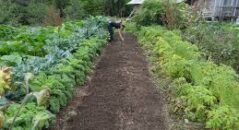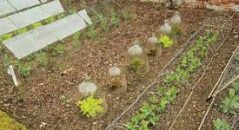Organic gardening implies that there will be no use of pesticides and synthetic fertilizers but it does not mean your plants will be left like that. You will use an array of tools in order to boost the health of your plants and eliminate the pests. With the help of organic farming, one can foster natural and holistic ecosystem. However, there are various steps involved in having a thriving garden through this procedure. Let us check them out individually.
The need to prepare the soil
If you want to get the finest results from organic garden, you need to first prepare the soil. The soil must have the needed nutrients and should be in good condition. Avoid the chemical soil treatment which can seep through the plants and even cause harm to the worms and bacteria. Get the soil tested prior to planting anything. You may either send the soil sample to the testing lab or buy a home testing kit. The soil must have plenty of humus or organic matter.

Prepare the compost
Gardens do benefit a lot from compost and if you want you can make your own compost. Compost has a variety of functions like it feeds the plants, conserves the water and helps cut down on the weeds. The yard waste and the food stay out of the landfills. Compost is thought to be best only when it has the right proportion of nitrogen and organic waste. The organic waste must be rich in nitrogen and the soil must also constitute the right amount of water. You need to use the layers of carbon material.
Choosing the right plants
Choose the plants that can thrive in your micro-conditions. Select the plants that may adjust to the light, water, nutrients, drainage and moisture. Most of the gardens carry gradation in such variables. Buy the seeds that are not raised through the pesticides and chemical fertilizers. You may grow poppies, sunflowers, phlox or dill.
The need for grouping the plants
The plants that you need to harvest such as flowers and vegetables should be grouped together in beds. They must be maintained tightly in beds. So, there will be no water wastage in the process. This will also reduce the weeding and thus you may target the nutrients and composts. Proper path maintenance will pave the way for a healthy soil. In the process, you may consider plants like indeterminate tomatoes, non-hybrid beans, zucchini, sugarnaps, etc.
Water the beds properly
Water the beds and plants in the morning. There will be no fungal or bacterial diseases if you water in the morning.
The need for weeding
Tiny seeds of the weeds are very much pervasive and so the plants will get weeds. It is good to pull the weeds by hand rather than using any toxic chemicals. By applying mulch also you can reduce the weed.
Protect your plants without any use of toxic pesticides
To have healthy plants, you need to make sure that the plants get adequate nutrients, moisture and sunlight. To prevent the pests, you may have diverse garden. Avoid planting only one kind of plant. Try and foster natural predators in the garden.
After you carry out all the steps, do not forget to harvest the fresh and nutrient rich fruits and vegetables. Check out the peak harvest season. Removal of sick plant is also the part of organic gardening.




